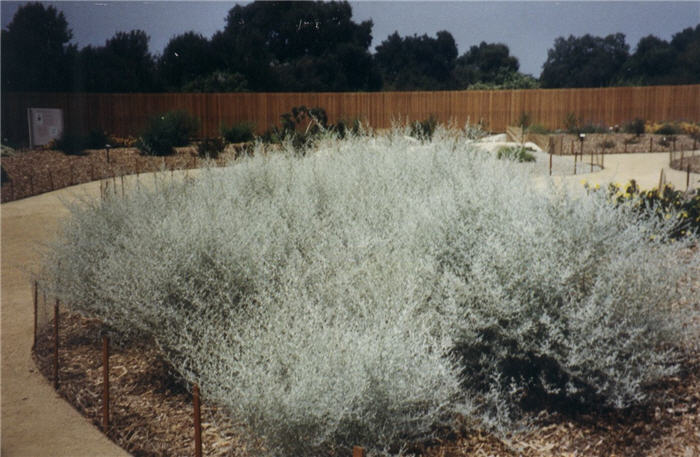| Botanical Name: Artemisia ludoviciana albula | |
| Common Name: Silver King Artemisia |

-
Anatomy
-
Culture
-
Design
Plant Type
Perennial
Height Range
1-3'
Flower Color
Yellow
Flower Season
Summer
Leaf Color
Grey Green, Grey, Silver, White
Bark Color
Grey
Fruit Color
n/a
Fruit Season
n/a
Sun
Full
Water
Low, Medium
Growth Rate
Fast
Soil Type
Sandy, Clay, Loam, Rocky, Unparticular
Soil Condition
Poor, Well-drained, Dry
Soil pH
Neutral
Adverse Factors
Allergenic, Invasive
Design Styles
Meadow, Mediterranean, Ranch
Accenting Features
Fragrance, Unusual Foliage
Seasonal Interest
Summer
Location Uses
Background, Perennial Border, Walls / Fences, With Rocks
Special Uses
Container, Cut Flowers, Erosion Control, Mass Planting, Naturalizing
Attracts Wildlife
n/a
Information by: Stephanie Duer
Photographer:
Photographer:
-
Description
-
Notes
'Silver King' typically forms a spreading clump of generally erect, non-woody stems to 24 to 36 inches tall and wide. Foliage is aromatic when bruised. Species is also commonly called western mugwort or white sage. This plant is most commonly sold in the US as a cultivar but the Royal Horticultural Society lists the correct name as Artemisia ludoviciana subsp. mexicana var. albula and indicates that Silver King is a common name. By whatever name, it had lovely foliage that provides a great seasonal bridge and is fabulous cut fresh or dried. SILVER KING may spread somewhat aggressively in the garden by rhizomes, though it appears to be more restrained than the species; if you're concerned, try it in containers.
Best grown in poor to moderately fertile, dry to medium moisture, well-drained soils in full sun. Excellent soil drainage is essential for growing this plant and it does poorly in moist to wet soils as plants are susceptible to root rot. Plant stems tend to flop in the summer, if over-fertilized, over-watered, or receive too little sunlight. Prune plants in early spring to tidy, being careful to leave sufficient numbers of live buds on each stem to facilitate bushy growth. Never prune stems to the ground. Foliage may also be lightly sheared in summer to shape, but avoid pruning in fall.